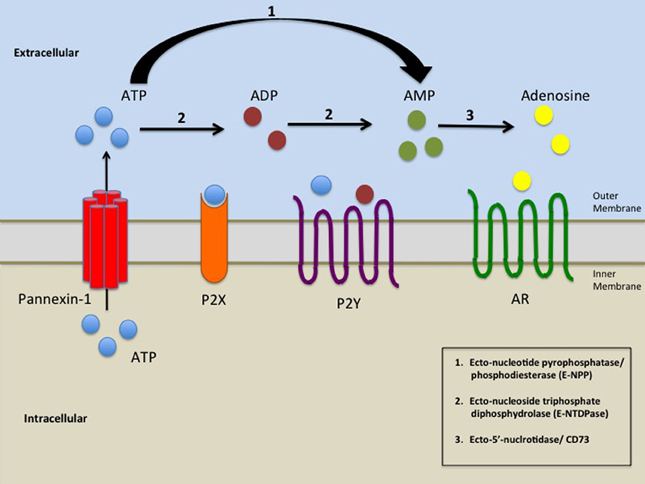 | ||
P2Y receptors are a family of purinergic G protein-coupled receptors, stimulated by nucleotides such as ATP, ADP, UTP, UDP and UDP-glucose. To date, 8 P2Y receptors have been cloned in humans: P2Y1, P2Y2, P2Y4, P2Y6, P2Y11, P2Y12, P2Y13 and P2Y14.
Contents
P2Y receptors are present in almost all human tissues where they exert various biological functions based on their G-protein coupling.
Coupling
The biological effects of P2Y receptor activation depends on how they couple to downstream signalling pathways, either via Gi, Gq/11 or Gs G proteins. Human P2Y receptors have the following G protein coupling:
The gaps in P2Y receptor numbering is due to that several receptors (P2Y3, P2Y5, P2Y7, P2Y8, P2Y9, P2Y10) were thought to be P2Y receptors when they were cloned, when in fact they are not.
